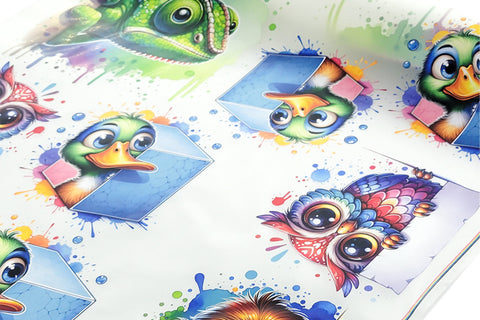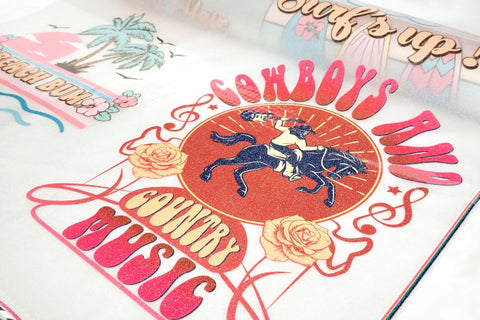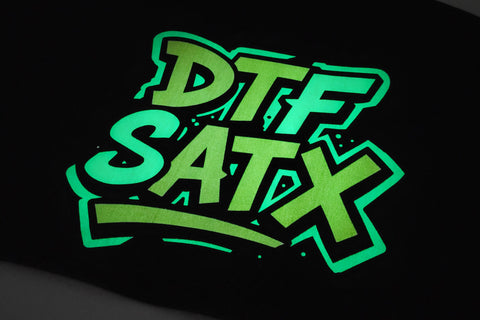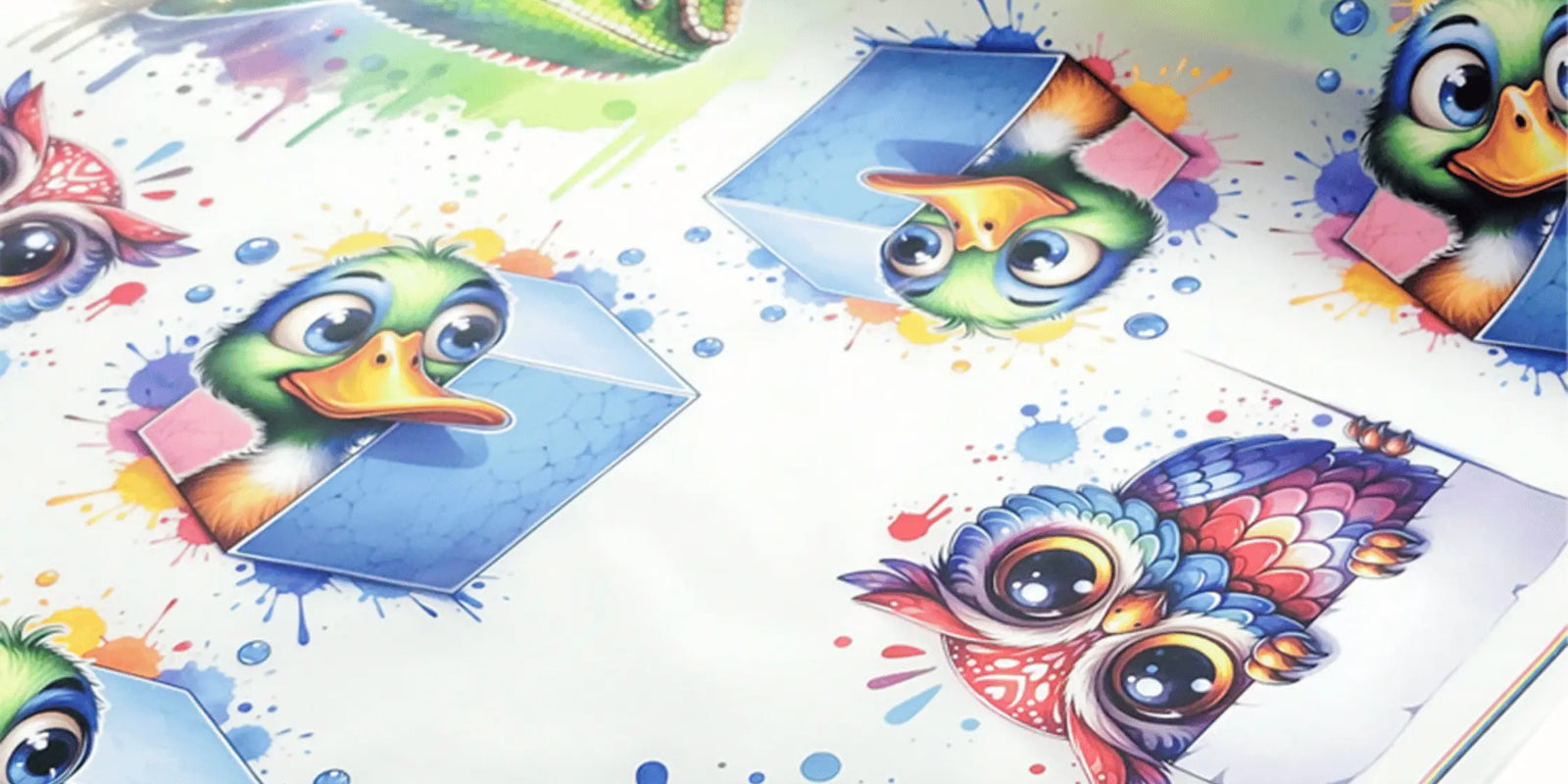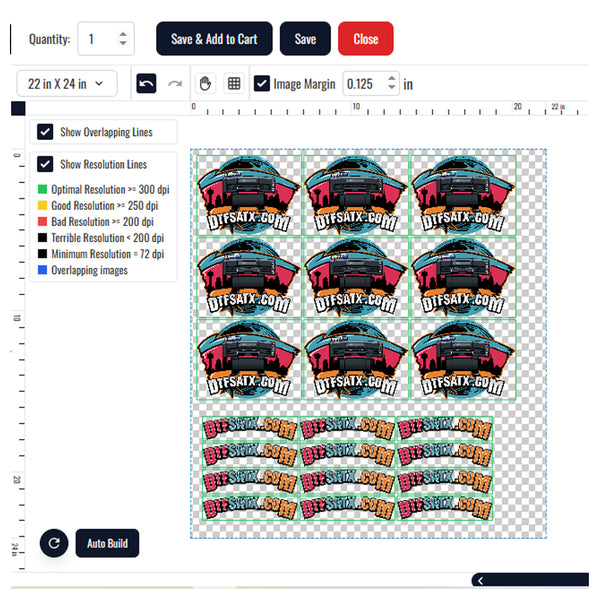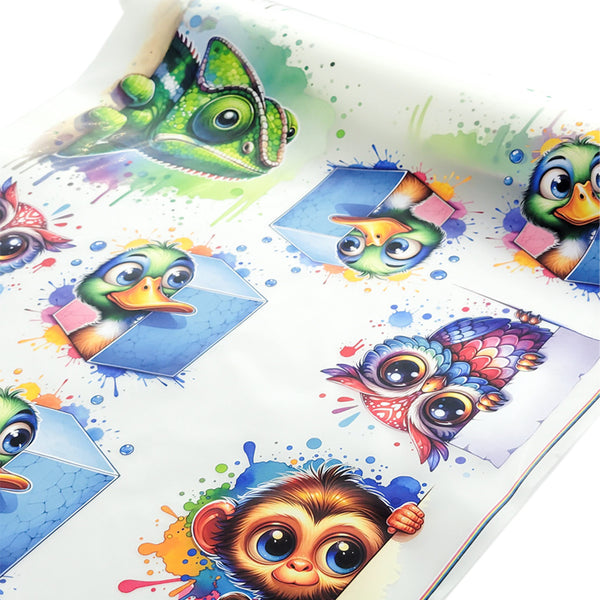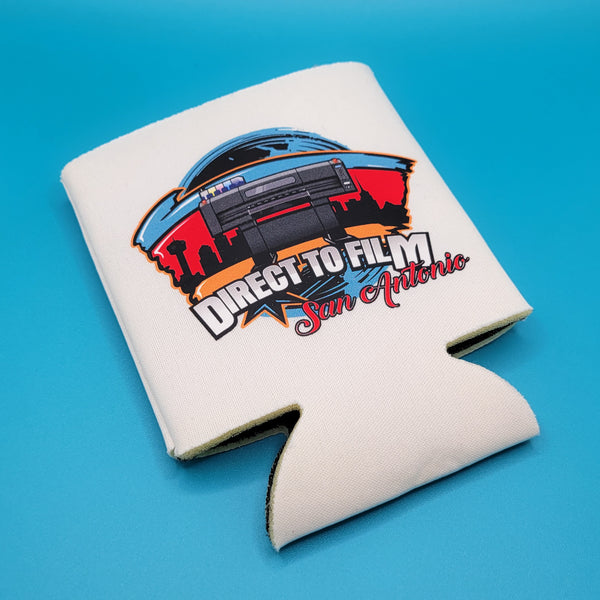Direct to film printing is known for its versatility, colors, and durability, for those asking How long do DTF prints last?
DTF transfers can last between 50 to 100 wash cycles with proper care. In terms of shelf life, you can store unused DTF transfers for up to 3 years under suitable conditions.
However, this guide informs you about a few factors that influence print longevity and durability, along with the best maintenance tips.
Factors Influencing DTF Print Longevity & Durability
Here are a few most influential factors that help you understand DTF prints' longevity and durability:
Quality of DTF Film, Ink, and Adhesive Powder
Durability is highly dependent on the quality of film, ink, and bonding glue. If you use high-quality PET film, it ensures a smooth transfer surface. Using premium pigment inks offers better color retention and prevents fading.
Similarly, high-quality hot melt adhesive powders improve bonding strength, which helps the print withstand frequent washes without peeling or cracking.
Heat Press Settings
Heat application should be correct for lasting bonding of the film with the fabric. If the temperature is too low, the adhesive may not fully cure; if too high, the ink can burn or the transfer can melt.
Consistent pressure and the right pressing time, which is around 15 seconds at 300–320°F, are essential to create a solid bond between the film and fabric.
Type of Fabric Used
Every fabric type interacts differently with DTF transfer prints. Natural fibers like 100% cotton offer strong adhesion and vibrant results, and synthetic materials like polyester need a different heating time to get a perfect result.
Blended fabrics may fall somewhere in between. Choosing the right fabric and adjusting settings accordingly can affect how long a DTF print lasts. However, DTF works well on almost every fabric type.
Post-Press Curing and Cooling
After pressing, let the garment cool completely before handling or storing. If you stretch the hot fabric, it can deteriorate the print and lead to weakened adhesion.
Some users also apply a final post-press to support the transfer, which enhances its resistance to washing and wear over time.
Washing and Drying Conditions
If you wash the DTF printed shirt in cold water with mild detergents can help you maintain the integrity of the print. High heat during tumble drying can cause the adhesive to degrade, so air drying or low-heat drying is always recommended.
Storage Conditions for Unused Transfers
Never store DTf transfers improperly because they can degrade even before being applied. Exposure to moisture, heat, or light can affect the adhesive or cause curling.
Proper storage in flat condition, airtight containers with silica gel packets, and in a cool, dry place preserves their usability for up to 3 years and ensures consistent application quality when pressed.
How Many Washes Can DTF Prints Withstand?
According to research after testing, High-quality DTF prints withstand 50 to 100 wash cycles without significant fading or cracking. They last longer than traditional DTG and heat transfer vinyl (HTV). So, this shows DTF is a preferred choice for long-lasting apparel designs.
Best Practices for Washing and Caring for DTF Prints
Proper garment care is important if you want to keep wearing your favorite DTF apparel again and again with the same vibrancy. Here are some recommended practices:
-
Wash the DTF printed fabric by turning garments inside out to reduce friction on the print.
-
Use cold water to preserve the adhesive and prevent ink from fading.
-
Avoid harsh chemicals and bleach, which can degrade the print.
-
Use a gentle wash cycle to minimize stress on the printed surface.
-
Don't use fabric softeners as they can weaken the adhesive bond of the transfer.
-
If you are putting the apparel in a dryer, set a low heat to prevent damage.
DTF vs. Other Printing Methods: A Durability Comparison
Here is a quick comparison of DTF vs other printing methods.
|
Feature / Method |
DTF (Direct-to-Film) |
DTG (Direct-to-Garment) |
HTV (Heat Transfer Vinyl) |
Screen Printing |
|
Wash Durability |
Excellent: Lasts 50-100 washes without major fading/cracking |
Moderate: Color may fade after 30–40 washes |
Good: Can last 40–50 washes if properly applied |
Excellent: Often lasts over 50 washes |
|
Flexibility / Stretch Resistance |
High: Stretches well without cracking |
Moderate: Can crack on stretchy fabric |
Good: Some cracking may occur on heavy stretching |
Moderate: May crack over time on stretch fabrics |
|
Weather Resistance |
High: Colors hold up well to humidity & temperature |
Moderate: may fade in the sun over time |
High: Vinyl is fairly resistant |
High: Long-lasting under various conditions |
|
Abrasion Resistance |
High: Resistant to rubbing or peeling |
Low to Moderate: Can wear down with friction |
Moderate: Can peel if edges aren’t sealed properly |
High: Ink bonds well, resists abrasion |
|
Fabric Compatibility |
Works on most fabrics, including polyester & blends |
Best on 100% cotton |
Limited: Requires smooth, heat-tolerant fabrics |
Works best on cotton and blends |
|
Detail Reproduction |
Excellent: Sharp, full-color designs including gradients |
Excellent: Photo-quality on light-colored cotton |
Limited: Not ideal for gradients or small text |
Good: Better for bold, simple designs |
|
Layer Durability (Multi-Color) |
High: All printed with one transfer |
High: Single-pass digital printing |
Low: Multi-color layering weakens adhesion |
Excellent: Separate screens allow robust layering |
|
Care Instructions |
Machine wash cold, inside out, tumble dry low |
Same, but fading is faster without extra care |
Wash inside out, avoid high heat in the dryer |
Wash cold, avoid bleach, tumble dry low |
Final Words
Direct-to-film printing is a budgeted and durable option for everyone who loves wearing DTf printed apparel or runs a business. You just need to follow maintenance instructions and invest in quality materials to ensure your DTF prints remain vibrant and intact through multiple washes and over long periods.
